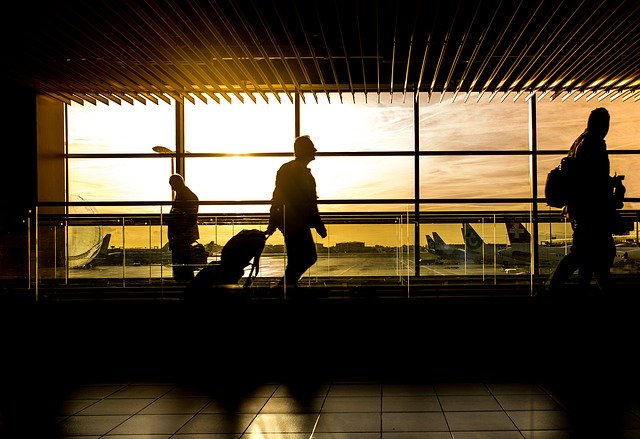K‑1 Fiancé(e) Visa: Bringing Your Loved One to the U.S.
A K-1 visa is a fiancé visa that allows foreign national fiancé(e) to come to the U.S. for up to 90 days to get married to the U.S. citizen. If the fiancé(e) has children they can accompany him/her on K2 visas.

K-1 Visa Requirements for the U.S. Citizen:
- You need to be a U.S. citizen to apply for your fiancée as a K-1. Unfortunately, green card Holders can not file a petition to bring their fiancé/fiancée to the United States; they will acquire this right after becoming the U.S. citizens.
- You must intend to marry your alien fiancé/fiancée within 90 days after he/she enters the United States. If you don’t get married within 90 days to your fiancé/fiancée, your fiance/fiancee will be considered “out of status”.
- You must be legally free to marry and any previous marriages must have been legally terminated by divorce, death, or annulment
- You met each other, in person, at least once within 2 years of filing your petition. There are two exceptions that require a waiver:
- If the requirement to meet would violate strict and long-established customs of your or your fiancé(e)’s foreign culture or social practice.
- If you prove that the requirement to meet would result in extreme hardship to you.
- You must prove that you can support your fiancé(e) financially.
- You must submit a copy of your criminal record if you had been convicted for a crime or crimes.
Requirements for the Foreign National Fiancé(e):
- You must be living outside of the United States in order to qualify for a K-1 visa.
- You must be legally free to marry and any previous marriages must have been legally terminated by divorce, death, or annulment.
- You must intend to marry the U.S. citizen within 90 days after your arrival to the United States. If you don’t get married within 90 days, your K1 visa will be invalid.
- You met each other, in person, at least once within 2 years of filing your petition. There are two exceptions that require a waiver:
- If the requirement to meet would violate strict and long-established customs of your or your fiancé(e)’s foreign culture or social practice.
- If you prove that the requirement to meet would result in extreme hardship to you.
- You have not violated U.S. immigration law. For instance, if you previously overstayed travel visa when you were in the United States, this could affect your K-1 application.
Qualifications for the Child/Children of Foreign National Fiancé(e) (K-2 Visa )
- In order to qualify for a K-2, you must be the child of foreign national fiancé(e) If you are adopted, there might be certain conditions on your application.
- You must also be less than 21 years of age and unmarried.
- You have not violated U.S. immigration law. For instance, if you previously overstayed travel visa when you were in the United States, this could affect your K-1 application.
Process of Application for K1 Visa:
In order to bring your fiancé(e) to the U.S., you will need to go through the following steps:
-
Filing Petition for Foreign National Fiance(e) with supporting documents with USCIS.
The process of bringing your fiancé(e) to the U.S. starts from filing Petition for Foreign National Fiance(e) with USCIS by the U.S. citizen. The purpose of this form is to establish the legitimacy of the relationship. You will be required to submit comprehensive package emphasizing the legitimacy of your relationship that includes photos together, signed affidavits from friends, love letters, copies of emails, phone calls logs, and so on. After USCIS approves the petition, it will be sent to the National Visa Center for processing. The National Visa Center will assign you a case number and send your petition to the U.S. Embassy or Consulate where your fiancé(e) lives.
-
Applying for Visa
The NVC (National Visa Center) will mail you a letter when it sends your fiancé(e) case to the U.S. Embassy or Consulate. Once you receive this letter, you need to inform your fiancé(e) to prepare for the interview. In preparing for the interview, your fiancé(e) will need to schedule and complete a medical examination which must be performed by an authorized panel physician. In addition to the medical examination, applicants will be required to present the proof that U.S. citizen has sufficient income to support his fiancé(e). The foreign national must also submit evidence that she had not been convicted of any serious crimes, and that she has no prior immigration violations.
During the interview, the Consular Officer will review visa application again to ensure that fiancé(e) is admissible to the U.S. If all documents were submitted and security check was cleared,the officer will make a final decision whether to give you K1 visa or not.
-
After You Receive a K-1 Fiancé(e) Visa
When you are issued a K-1 visa, the Consular Officer will give you a passport containing the K-1 visa and a sealed packet containing the documents you provided before, plus other documents prepared by the U.S. Embassy or Consulate. It is important that you do not open the sealed packet. Only the Department of Homeland Security immigration official should open this packet when you enter the United States.
You must enter the U.S. within 6 months from the date of visa issuance.
-
Entering the United States - Port of Entry
A visa allows a foreign citizen to travel to the U.S. port-of-entry and request permission to enter the United States. You should be aware that a visa does not guarantee entry into the United States. The Department of Homeland Security (DHS), U.S. Customs and Border Protection (CBP) officials have authority to permit or deny admission to the U.S. Upon arrival at the port-of-entry, be prepared to present to the CBP officer your passport with visa and your unopened/sealed packet containing your documents.



-
Marriage to the U.S. citizen
Upon entering the U.S. on a K-1 Visa, you must get married to the U.S. citizen within 90 days. Once you get married, you may apply for permanent residence and remain in the U.S.
If the marriage does not take place within 90 days, fiancé will be required to leave the United States. Fiancé(e) status automatically expires after 90 days. It cannot be extended or changed to different non-immigrant status. If your fiancé(e) does not depart, he or she will be in violation of U.S. immigration law. This may result in removal (deportation) and/or could affect future eligibility for U.S. immigration benefits.
Why Work With Us for Your K‑1 Visa
- ✅ Attorney-led review — your case handled or reviewed by real attorneys, not bots
- ✅ Multilingual support in English, Russian & Ukrainian — clear communication always
- ✅ Proven experience in K‑1 visa petitions — we’ve helped dozens of fiancé(e) visa cases succeed
- ✅ Personalized attention — you won’t be just another application in a stack
- ✅ Strategic evidence planning — proof of relationship, joint trips, communication records, etc.
- ✅ Interview prep & coaching — mock interviews, sample questions, document walkthroughs
- ✅ Post-entry support — help with adjustment to green card after marriage
- ✅ Transparent pricing and regular updates — you know where your case is at every step
- ✅ Serving clients around the world — no matter where your fiancé(e) is located
- ✅ Trusted by U.S., Russian & Ukrainian communities — our name carries weight
Frequently Asked Questions About the K‑1 Fiancé(e) Visa
What is a K‑1 fiancé(e) visa?
A K‑1 visa allows a U.S. citizen to bring a foreign fiancé(e) to the U.S. for marriage. After marriage (within 90 days), the foreign spouse can apply for a green card (adjustment of status).
How long does the K‑1 visa process take?
Processing varies by USCIS center and consulate, but typically takes 8–12 months or more, depending on the country and backlog.
What evidence is required for a strong K‑1 petition?
Documents showing a genuine relationship — photos together, communication logs, travel, affidavits from friends/family, cohabitation plans, etc.
Can the fiancé(e) travel after the visa is approved?
Once the K‑1 visa is issued, your fiancé(e) can travel to the U.S. and must marry you within 90 days of entry.
Do you help after marriage to adjust status?
Yes. We support the green card filing (adjustment of status) after marriage, help with paperwork, interview prep, and maintaining compliance.
Do you service clients in Russian and Ukrainian?
Absolutely. Attorney Oksana Sakhniuk and our team are fluent in those languages and well known in Eastern European immigrant communities.
Start Your K‑1 Visa Journey
Don’t navigate this complex process alone. Let us help you bring your fiancé(e) to the U.S. safely, legally, and with confidence.
Schedule a consultation or contact us to get started.